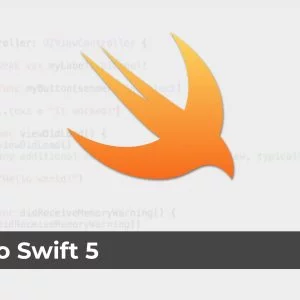
Are you interested in learning how to write iOS apps using MVVM design pattern?
MVVM design pattern allows you to develop applications that are easily maintainable and testable, and now you can learn it from the comfort of your home.. in your own time.. without having to attend class.
My name is Mohammad Azam and I am the creator of many popular online courses including Mastering MapKit in iOS Using Swift and Creating Stickers and iMessages Applications in iOS 10 Using Swift 3, Mastering Micro Services Using JPA, Mastering Server Side Swift Using Vapor, Mastering ARKit for iOS, Mastering Core ML for iOS and more.
I have created over 2 dozens apps and some of my apps were even featured by Apple on the App Store. I have worked with fortune 500 companies as a lead iOS developer and helped them grow their business ten folds.
What s stopping you from signing up to today?
You don’t have enough time: Not a problem at all. We have designed the course so you can learn everything you need to know in less than 4 hours. In fact if you think that the course fell short on delivering topics then we will give you your MONEY BACK.
Here are some of the reviews from our previous courses:
Instructor Details
Courses : 17
Specification: MVVM Design Pattern Using Swift in iOS
|
14 reviews for MVVM Design Pattern Using Swift in iOS
Add a review Cancel reply
This site uses Akismet to reduce spam. Learn how your comment data is processed.

| Price | $13.99 |
|---|---|
| Provider | |
| Duration | 10.5 hours |
| Year | 2021 |
| Level | All |
| Language | English |
| Certificate | Yes |
| Quizzes | No |

$19.99 $13.99






Tsuyoshi Yamaguchi –
Although the entire course is about 8 hours, the part which is explaining MVVM or how to code it was roughly 50%. I didn’t expect very basic knowledge, for instance, how to create a project, how to setup storyboard and so on.
Jean Max Chauvet –
He explain the MVVM very clearly and every body can understand.
Jos In cio Athayde Ferrarini –
I’ve been working with native OS native development since 2014. I was interested only on MVVM part. This course is too basic for a advanced developer and too advanced for someone who is learning iOS development. I think the experience level was to broad. I think the course would fit better audiences if divided into two distinct sections: Course 1: MVC MVVM without view to view model and view model to view bindings Unit tests clojure?() always use optionals, for safety reasons. I know that URL(… )! seems OK because you are sure you are inputing a valid URL, but, for the principle of safe programming, I do not endorse forced unwrap EVEN for @IBOutlets. Course 2: MVVM view to view model and view model to model bindings. Single Responsibility UITableViewController breaks this principle by a far margin. Always split delegate and datasource. PS: I found this strictly wrong Forced unwrap. Violates safe coding principles. PS: this I found interesting: Writing @IBOutlet in code first Vs the usual approach ctrl drag from storyboard in split view.
Yuga Wicaksono –
I like the pace that the instructor is explaining the materials
Nitin Aggarwal –
Amazing course for beginners who wants to learn MVVM architecture in iOS. I learned so many things about MVVM. I strongly recommended this course for beginners. Big Thank for the last two sections i.e. Generic Table data source and Unit testing.
Uday Surya –
very good so far
Abhishek Sharma –
It is a great course for learning basic staff in MVVM. Thank you
Mohammad Hussain Anwer –
In future lectures please also explain complex swift syntax that are not usually used for simple projects but should be used for good practice.
Ravi Raja –
Please add more stuff related MVVM using Protocol. Thanks
Ruchi –
1. The tutorial doesn’t include dependency injection and observer pattern, which are very important topics of MVVM. 2. Spent pretty much time on UI Design and other things instead of the main topic. Had high hopes with the course but, felt like a waste of money!!
Rahul Sharma –
it’s a good course to understand MVVM architecture
Ketaki Kurade –
It’s a very good course with all the topics explained in detail. Although I was wondering if we could have detailed explanation on other ways of binding UI & ViewModel. Also a section explaining how mvvm makes testing easier than testing in mvc would be appreciated.
Fabio Luiz Paranhos Borelli –
Great!
Yisus G –
There are some sections marked as Legacy so I think this are not part of the course, because they’re repeating some lectures but with a different structure of the project. I worked all the lectures with the same project that I started in the lecture 1 (for the Good Weather) and with a little changes is working through all the course. So maybe including one or more MVVM examples would be great! Thanks for your work.